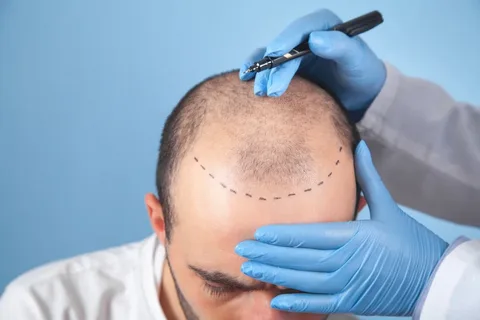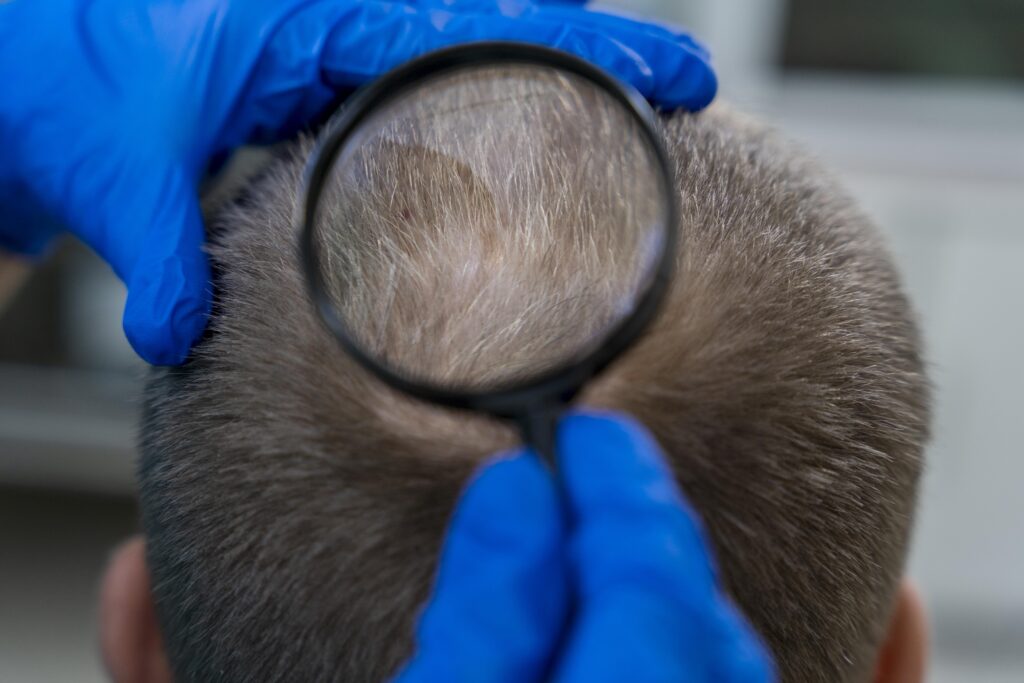Running low on scalp donor hair and exploring alternatives? You may be asking, Body to Scalp Hair Transplant: Can It Replace Head Hair Naturally? This guide explains how body hair, like from the chest, beard, or arm, can be used to restore scalp density.
Discover key benefits such as expanded donor supply, improved coverage in advanced hair loss cases, and compatibility with modern FUE techniques.

Backed by expert insights and proven results, this article helps you understand if body hair can deliver natural-looking, lasting scalp restoration.
READ MORE: Is Hair Transplant Halal or Haram? | What Islam Says About It
Body to Scalp Hair Transplant: Can It Replace Head Hair Naturally?
A body-to-scalp hair transplant is a procedure where hair follicles are harvested from areas of the body, such as the chest, abdomen, or legs, and transplanted to the scalp.
This technique is typically used when scalp hair is insufficient for traditional hair transplants.
The Follicular Unit Extraction (FUE) method is commonly employed for body-to-scalp hair transplants.
FUE involves extracting individual follicles from the donor site and transplanting them to the scalp’s thinning or bald areas.
This method has proven to be a viable alternative for individuals looking for permanent hair loss solutions but lacking sufficient scalp hair for traditional hair transplants.
Benefits and Considerations
Benefits:
- Alternative Donor Source: If you have limited scalp hair, body hair provides an additional source for transplantation.
- Minimally Invasive: FUE is a minimally invasive technique, meaning there’s no large incision required, reducing scarring and recovery time.
- Permanent Results: When performed correctly, the transplanted body hair grows naturally and lasts a lifetime.
- Natural Look: The body hair, typically matching the scalp’s color and texture, provides a seamless, natural look.
Considerations:
- Textural Differences: Body hair may have different textures, such as coarser or finer hair, which may affect the overall aesthetic.
- Availability of Donor Hair: The amount of body hair available for transplantation can limit how much hair can be transplanted.
- Longer Recovery Time: Although FUE is minimally invasive, the recovery period for body hair transplants may be slightly longer compared to scalp-only transplants.
- Possible Growth Variations: Body hair may not grow as quickly or consistently as scalp hair.

Procedure Steps and Recovery Timeline
Step 1: Consultation and Evaluation Dr. Rana Irfan will conduct an initial consultation to evaluate your scalp and body hair. He will determine whether you’re a good candidate for a body-to-scalp hair transplant, based on your specific needs and goals.
Step 2: Harvesting Hair Follicles Using the FUE technique, individual hair follicles are extracted from the donor areas (usually the chest, abdomen, or legs). This process is done under local anesthesia, ensuring that you remain comfortable throughout.
Step 3: Transplanting Hair Follicles The harvested follicles are then transplanted to the areas of the scalp that are thinning or bald. The process is precise, and Dr. Rana Irfan ensures that the follicles are placed at the right angles to mimic natural hair growth.
Step 4: Recovery
- Immediate Recovery: Most patients can resume normal activities within 1-2 days after the procedure, although some mild swelling and redness may occur.
- Full Recovery: It typically takes 6-12 months to see the final results, as the transplanted hair gradually grows. Full recovery from the procedure may take several weeks, but the results are permanent.
Expected Outcomes (No Exaggerated Claims)
While a body-to-scalp hair transplant can offer a natural and permanent solution to hair loss, individual outcomes can vary.
Success depends on various factors, including the quality of the donor hair, the skill of the surgeon, and the patient’s aftercare.
At Dr. Rana Irfan’s clinic, we use the latest technology and techniques to ensure the best possible outcome.
However, it’s important to have realistic expectations: while the transplanted hair will grow naturally, it may not blend perfectly with existing scalp hair due to differences in texture or growth patterns.
How Much Does a Body-to-Scalp Hair Transplant Cost?
The cost of a body-to-scalp hair transplant varies depending on several factors, such as the number of grafts needed, the complexity of the procedure, and the time required.
As this procedure involves the use of body hair, it may cost more than traditional scalp hair transplants.
To get an accurate estimate, it’s best to schedule a consultation with Dr. Rana Irfan. He offers personalized pricing based on your specific needs and goals.

Dr. Rana Irfan’s Credentials and Techniques
Dr. Rana Irfan is an internationally recognized hair restoration expert, certified by the American Board of Hair Restoration Surgery (ABHRS) and the International Society of Hair Restoration Surgery (ISHRS).
His years of experience in hair transplant techniques like FUE and FUT ensure that every patient receives the highest standard of care.
At his clinic in Islamabad, Dr. Rana Irfan employs the latest technologies to perform body-to-scalp hair transplants, delivering natural-looking, long-lasting results.
Who is a Good Candidate for a Body-to-Scalp Hair Transplant?
The ideal candidates for body-to-scalp hair transplants are individuals who:
- Have thinning or bald spots on the scalp and are looking for a permanent solution.
- Have enough body hair (chest, abdomen, legs) to use as a donor.
- Are in good overall health and have realistic expectations for the outcome.
- Prefer a minimally invasive procedure with minimal scarring.
Dr. Rana Irfan will thoroughly assess your hair type, health, and goals to determine if this procedure is suitable for you.
Local and International Relevance
Dr. Rana Irfan’s clinic in Islamabad provides high-quality hair restoration services not only to local patients but also to international patients seeking medical tourism options.
With state-of-the-art facilities and expertise, patients from around the world choose Dr. Rana Irfan for their hair restoration procedures.
Related Services
FAQ Section
Can you transplant body hair to your head?
Yes, body hair can be transplanted to the scalp, especially when there is insufficient scalp hair. Areas like the chest, abdomen, and legs are commonly used as donor sites.
How successful is a body hair transplant?
Body hair transplants can be very successful, but results may vary depending on the donor hair’s quality and the patient’s overall health. The transplanted hair typically grows naturally and provides permanent results.
Why can’t body hair be used for hair transplants?
Body hair can be used in hair transplants, though it may not blend perfectly with scalp hair due to differences in texture and growth patterns. However, it is a valuable alternative when scalp hair is insufficient.
Can you use body hair for a beard transplant?
Yes, body hair can be used for beard transplants if necessary, using the same technique as for scalp restoration.
What is the recovery time for a body-to-scalp hair transplant?
Recovery time typically takes a few weeks for the initial healing process, but full results are visible after 6-12 months as the transplanted hair begins to grow.
